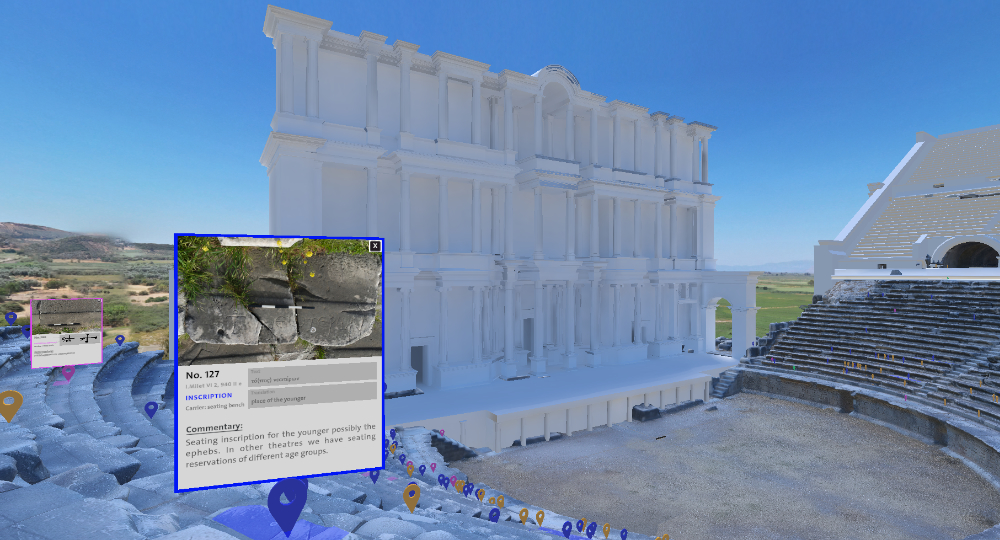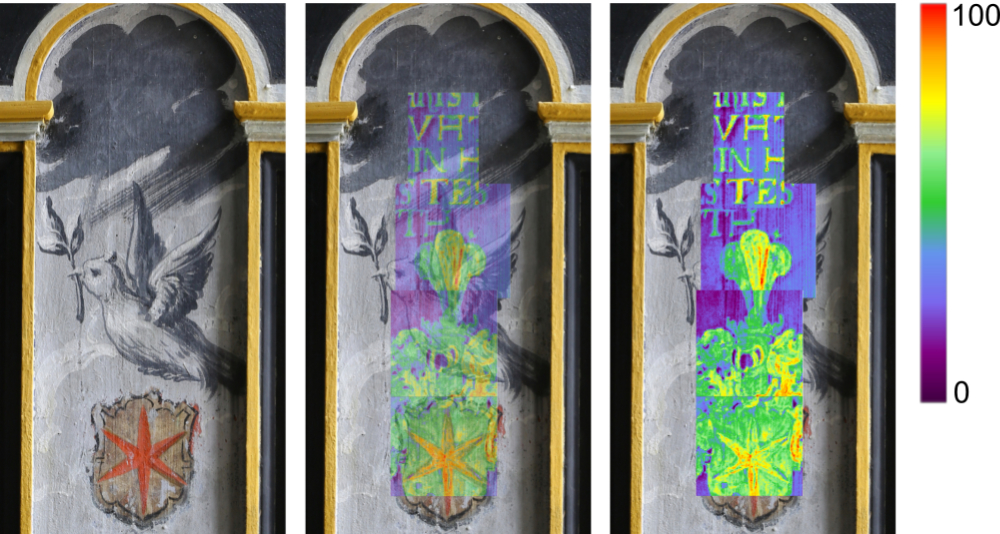Understanding Written Artefacts: Immersive Inscribed Spaces
Immersive Inscribed Spaces: Immersive City Scripts and The Interior of the Church in Lucklum
Introduction
We are part of two research projects at the Cluster of Excellence ‘Understanding Written Artefacts’ (UWA): ‘Immersive City Scripts: Inscriptions and the Construction of Social Spaces in Miletus (Asia Minor)’ and ‘The Interior of the Church in Lucklum: A Compendium of Early Modern European Emblematics’. Both projects are part of the research field ‘Inscribed Spaces’ at the UWA Cluster. ‘Written artefacts’ is a cover term for all objects produced by human beings which carry handwriting or visual signs applied by hands. The cluster studies the cultural impact of written artefacts on human societies and establishes interdisciplinary collaboration between the humanities, natural sciences, and computer science, including human-computer interaction.
With our work, we introduce the use of immersive technologies to the UWA cluster for the first time. In the two projects, we explore how immersive technologies such as virtual reality (VR) can be applied to written artefacts research. Although spatial context is essential when studying written artefacts such as inscriptions, traditional documentation and data analysis methods are mainly based on 2D and non-immersive representations. With the use of immersive technologies, we aim to provide new perspectives. Tools and better spatial understanding for researchers who work with written artefacts and inscribed spaces. Moreover, we investigate suitable interaction concepts for research focused applications with information-dense virtual environments. In our work, we develop interactive VR applications based on two locations with written artefacts:
- A large-scale outdoor area revolving around the ancient Roman theatre of Miletus in Asia Minor
- The interior of the church at the Rittergut Lucklum in Germany
Immersive City Scripts
The ancient theatre of Miletus (Asia Minor, Turkey) is from the Greco-Roman period. Today, only two of the former three seating tiers remain. The theatre features over 300 written artefacts such as inscriptions and architectural marks which are engraved into the stone of the stairs or walls. In our VR application, we will make them accessible, understandable, and comparable in their spatial context. Their location is marked by 3D pins which offer additional information on each written artefact. Moreover, we reconstructed former structures, such as the stage, the third tier and missing seating rows.
 Left: Drone image of the theatre, right: 3D Model with 360° Skybox
Left: Drone image of the theatre, right: 3D Model with 360° Skybox
 Virtual theatre of Miletus with reconstructions and inscriptions with spatial information.
Virtual theatre of Miletus with reconstructions and inscriptions with spatial information.
The Interior of the Church in Lucklum
The church in Lucklum (located in Lower Saxony, Germany) houses an outstanding collection of 209 Latin inscriptions and 156 emblematic paintings from the early eighteenth century. The inscriptions and emblematic paintings come in various sizes and are located all over the interior of the church, on the gallery, the walls and even on the ceiling. In our VR application we will provide information on all the written artefacts to help researchers examine particularly relevant constellations within the inscribed space. Furthermore, we visualize hidden layers underneath the current paintings which are uncovered by a material scientist through X-ray fluorescence analysis. We display the resulting intensity images of these hidden layers as overlays on top of the virtual interior of the church.
 Virtual church of Lucklum
Virtual church of Lucklum
 Visualising intensity image of hidden paint layers underneath of an emblematic painting in Lucklum.
Visualising intensity image of hidden paint layers underneath of an emblematic painting in Lucklum.
The Virtual Church in Lucklum | 360° Views
Further Information
- https://www.csmc.uni-hamburg.de/written-artefacts.html
- Immersive City Scripts: Inscriptions and the Construction of Social Spaces in Miletus (Asia Minor)
- The Interior of the Church in Lucklum: A Compendium of Early Modern European Emblematics
Funding
The research in both projects is funded by the Deutsche Forschungsgemeinschaft (DFG, German Research Foundation) under Germany’s Excellence Strategy – EXC 2176 ‘Understanding Written Artefacts: Material, Interaction and Transmission in Manuscript Cultures’, project no. 390893796. The research was conducted within the scope of the Centre for the Study of Manuscript Cultures (CSMC) at Universität Hamburg.
